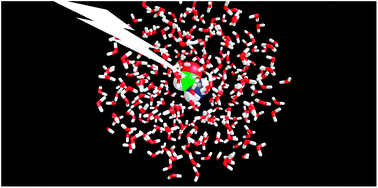QM/MM non-adiabatic decay dynamics of formamide in polar and non-polar solvents
Abstract
Non-adiabatic on-the-fly dynamics simulations of the photodynamics of

* Corresponding authors
a
Rudjer Bošković Institute, Division of Organic Chemistry and Biochemistry, P.O.B. 180, Zagreb, Croatia
E-mail:
iantol@emma.irb.hr, mmaksic@emma.irb.hr
Fax: +385-1-4680-195
Tel: +385-1-4561-008
b
Institute for Theoretical Chemistry, University of Vienna, Waeringrstrasse 17, A-1090 Vienna, Austria
E-mail:
hans.lischka@univie.ac.at
c Department of Chemistry and Biochemistry, Texas Tech University, Lubbock, USA
Non-adiabatic on-the-fly dynamics simulations of the photodynamics of

 Please wait while we load your content...
Something went wrong. Try again?
Please wait while we load your content...
Something went wrong. Try again?
I. Antol, M. Eckert-Maksić, M. Vazdar, M. Ruckenbauer and H. Lischka, Phys. Chem. Chem. Phys., 2012, 14, 13262 DOI: 10.1039/C2CP41830D
To request permission to reproduce material from this article, please go to the Copyright Clearance Center request page.
If you are an author contributing to an RSC publication, you do not need to request permission provided correct acknowledgement is given.
If you are the author of this article, you do not need to request permission to reproduce figures and diagrams provided correct acknowledgement is given. If you want to reproduce the whole article in a third-party publication (excluding your thesis/dissertation for which permission is not required) please go to the Copyright Clearance Center request page.
Read more about how to correctly acknowledge RSC content.
 Fetching data from CrossRef.
Fetching data from CrossRef.
This may take some time to load.
Loading related content
